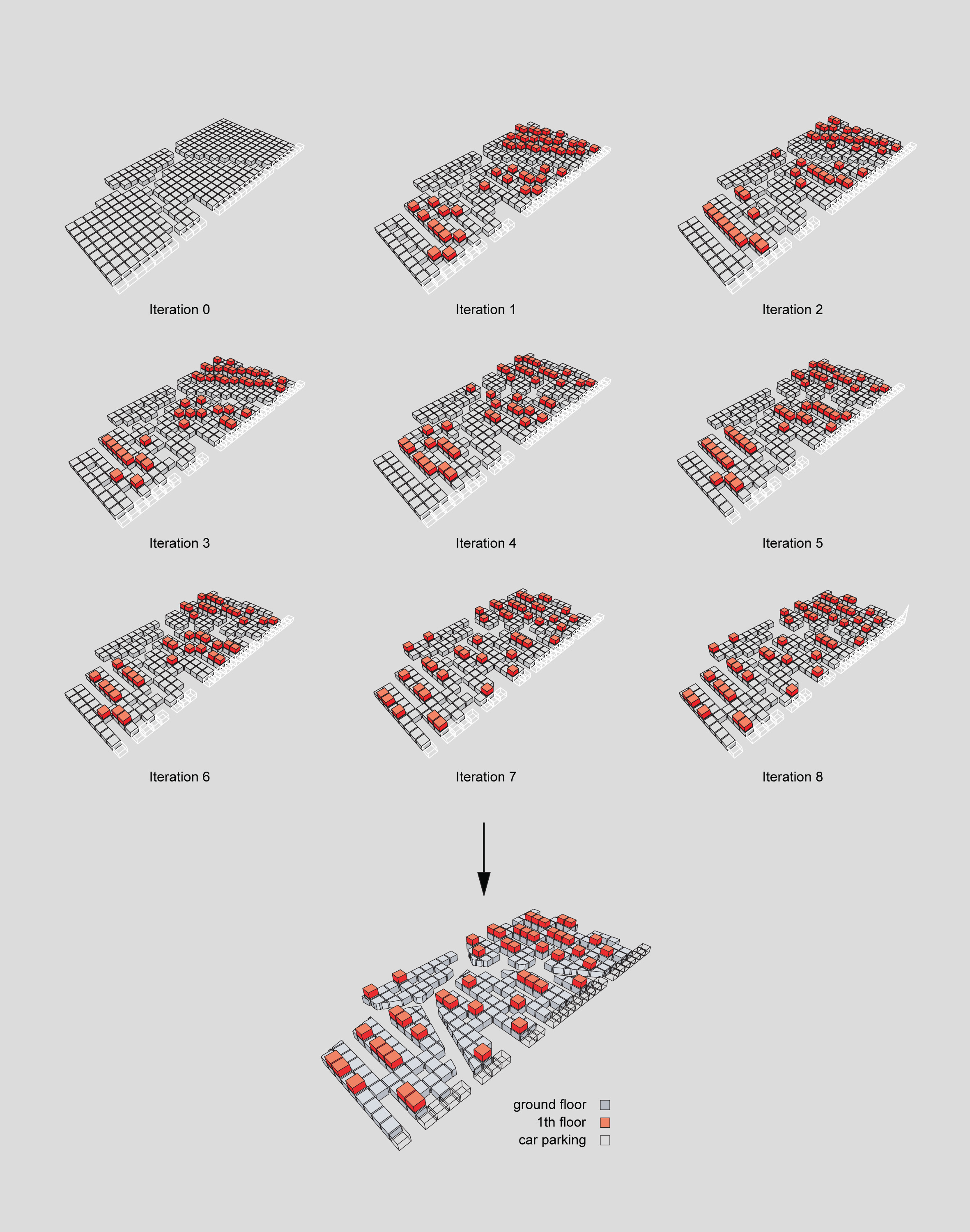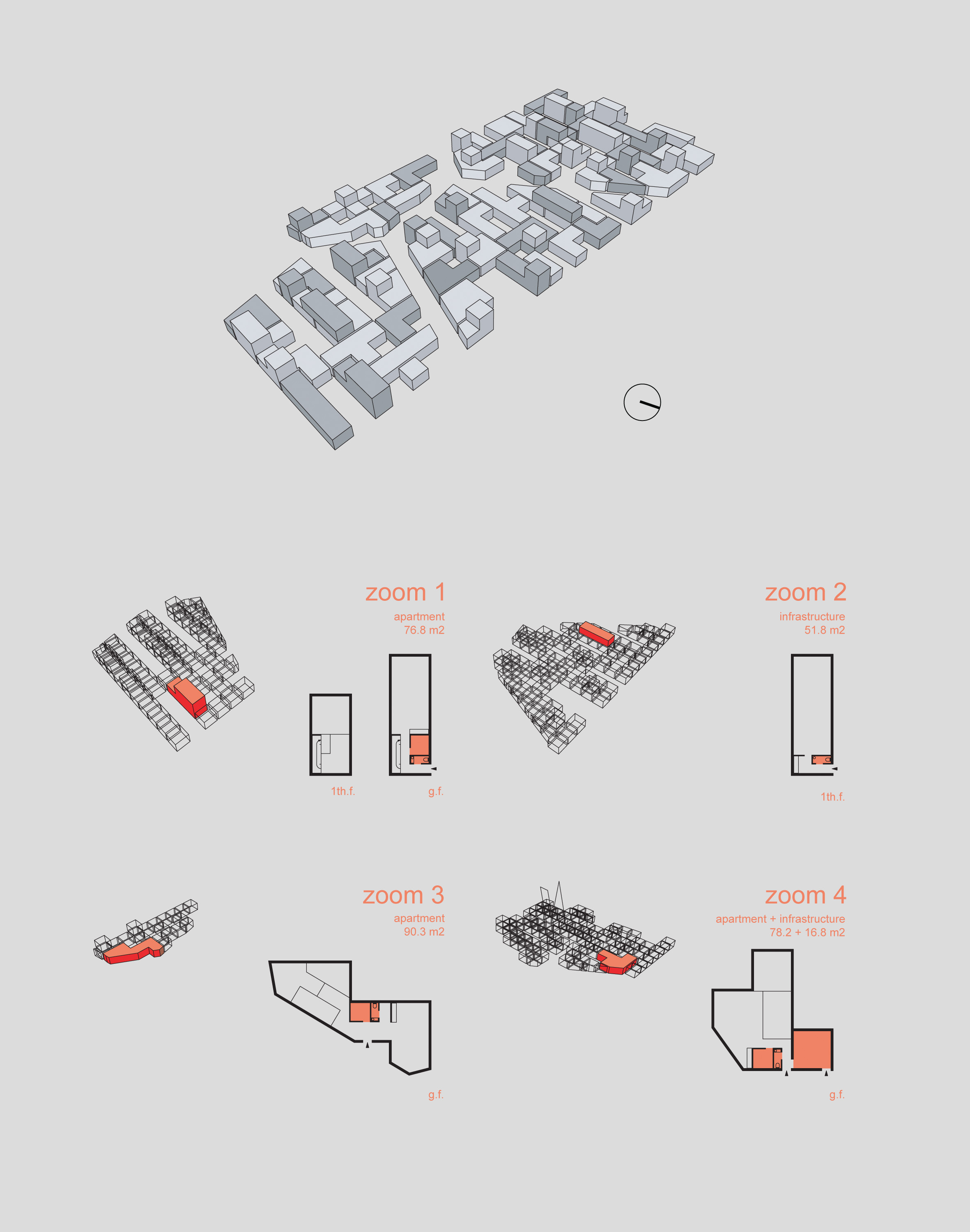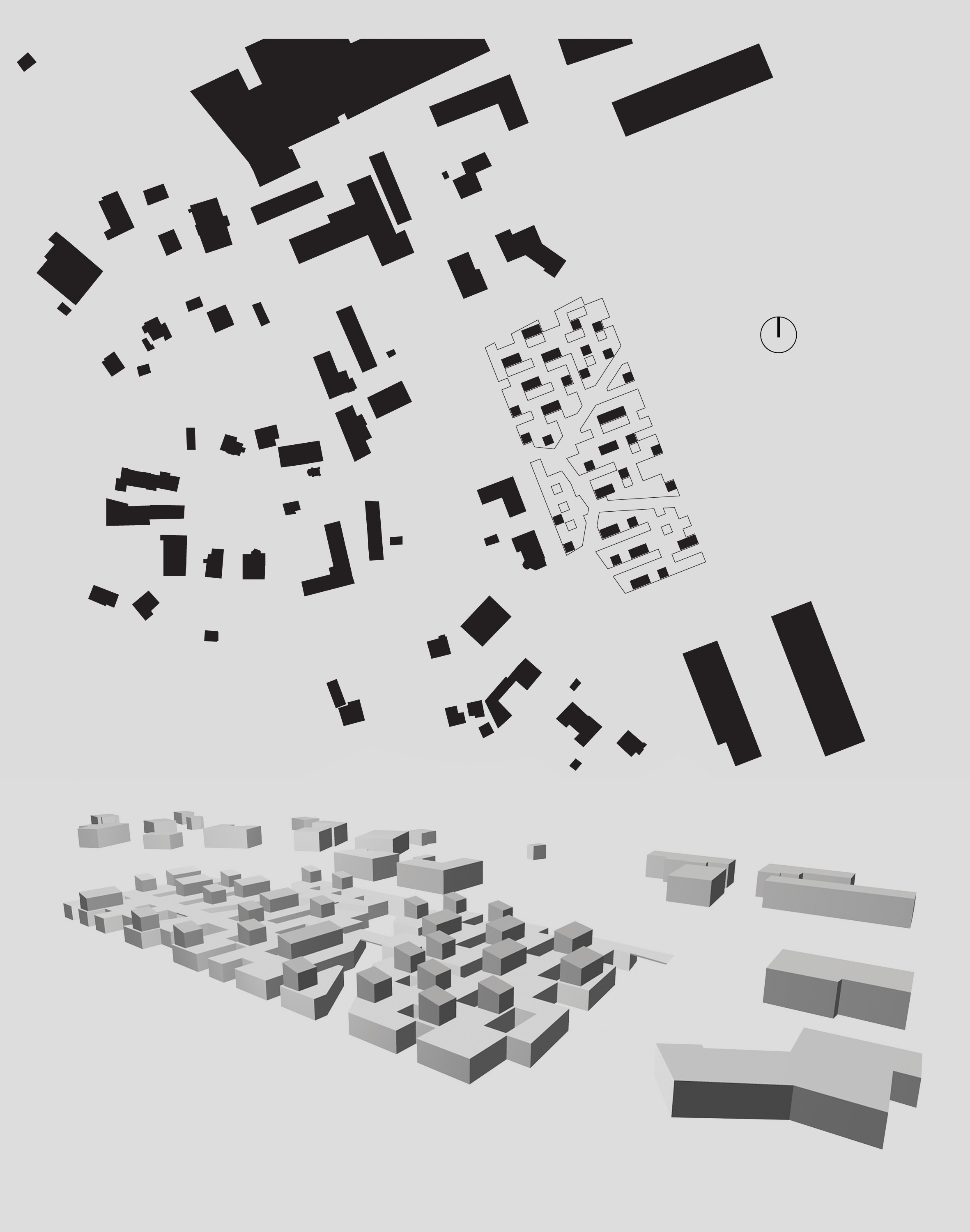Rulebased housing
Zellular automaton passed Turing Test!
In the course of the international housing congress 'housing best before' in Graz, a Europe-wide anonymous housing competition was announced. While all the other participants in the competition delivered finished designs in the classical sense, with the "Rulebased housing" project a general set of rules was developed, which made it possible to generate tenable designs under the site- and programme-specific conditions.
The defined rules were then translated into the abstract language of a mathematical model (cellular automaton) and exposed to mutual interactions within the cellular field representing the concrete planning location.
An algorithm sets the cellular automaton in motion by spatially optimising the residential modules according to the predefined rules. this is done by a PROGRAM that transforms the existing state into a higher optimised state in CONCRETE TIME STEPS. the future state of each cell depends on the states of the adjacent cells as well as on the local boundary conditions. the rules act as movement attractors. the system thus comes into motion and strives towards self-organisation in an AUTONOMOUS RULE-BASED PROCESS driven by interaction of the parts with each other and with their environment. like an organism, a formally non-determined spatial structure emerges step by step from an initially homogeneous field.
The system automatically comes to a standstill when an optimised compromise constellation has been established among the individual living modules and the structure cannot be optimised any further.
The automat passed the Turing Test with the computer-generated competition entry - although the anonymously submitted project did not win the architecture competition, it obviously convinced the jury and was awarded 4th prize (purchase) after all.



 Index
Index